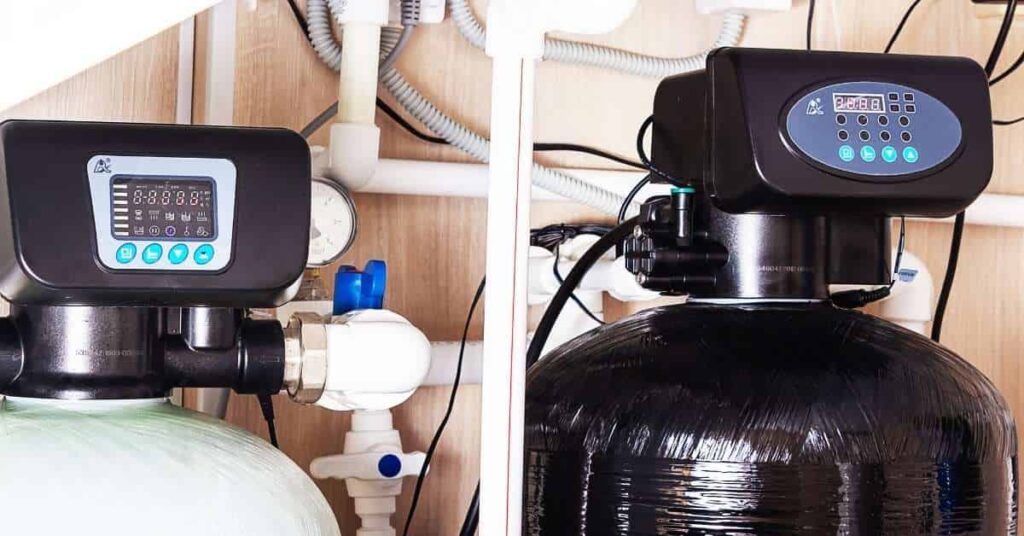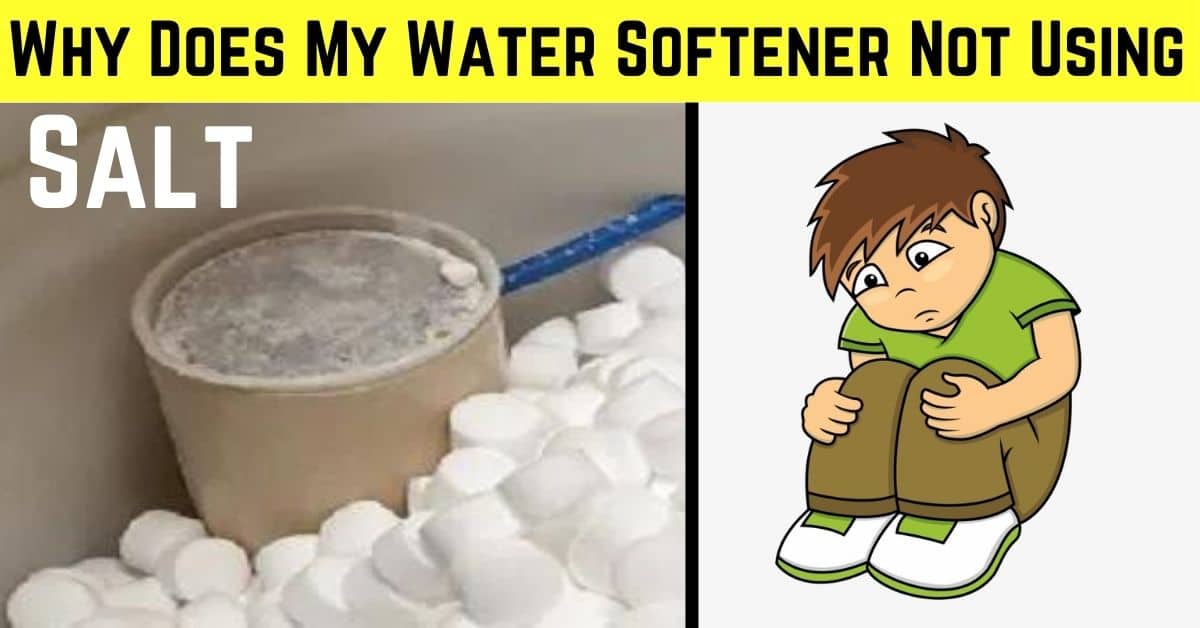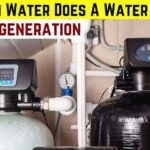Do you have a softener that does not seem to be using salt? If so, you are not alone; many people have this same issue.
If your filtering system is not working as expected, there are a few possible explanations.
This blog post will explore why your city water softener might not use salt and what you can do about it. Keep reading to learn more.
9 Causes My Water Softener Not Using Salt
1. The softener needs to be properly installed: If your water softening system is not installed correctly, it won’t work properly.
Ensure that the unit is level and that all connections are secure.
2. Unplug softener: This may seem like an obvious one, but if your water softener brine tank does not plug in, it obviously won’t be able to work!
Your unit should plug into an outlet and turn the power on.
3. There is a power outage: If there is a power outage in your area, it could affect your water pressure’s ability to function.
Even a plugged-in unit won’t be able to work without electricity.
4. The control panel is not set correctly: The control panel on your discolored water softening must be set correctly for the unit to work properly.
Be sure to consult your owner’s manual for instructions on doing this.

5. Something is blocking the flow of water: If something is blocking the flow of soft water flow into your level of water softening, it won’t function accurately.
It could be anything from a clogged filter to a kink in the hose. Be sure to check all of your connections and filters to ensure they are clear.
6. There is air in the system: If there is air in the design, it can prevent water problems from working properly.
It could be because of a leak in the system. Be sure to check all of the connections and seals for leaks.
7. The salt level is low: The salt level in the softened water needs to be high enough for the unit to work properly.
If the solar salt level is too low, it can cause the team to malfunction. Check the salt level (sodium ion) and add more if necessary.
8. The softener is not regeneration: Regeneration is a process that cleans the resin bead in the softener.
You need to do this process regularly for the unit to work properly.
Suppose your water softener is not regenerating. It could be due to various factors, such as a power outage or a low salt level.
9. There is something wrong with the resin beads: If the resin bed in the softener is damaged, it can prevent the unit from working properly.
These beads can become damaged over time and eventually need replacement. Consult your owner’s manual for instructions on returning the resin bed.
How to Prevent Your Water Softener from Not Using Salt?
Suppose your water purification isn’t using salt (potassium chloride).
The unit may need to be set up correctly, the resin needs replacement, or there is a blockage in the resin tank.
If you’re having trouble with your water softening process, follow these steps to troubleshoot the problem.
- Check the settings on your softener- Ensure the unit is set to regeneration time based on water hardness and usage.
- Inspect the resin bead- It will need replacement if it is cracked or damaged.
- Clean out the salt tank- Remove any sediment, hard minerals, or debris blocking the salt from dissolving in the soft water flow plug.
- Check for leaks in the system- If there are any leaks, repair them before using the softener.
- Cleaning- Use a softener cleaner regularly to clean the interior of your unit and prevent salt build-up.
- Make sure that the salt level in your unit is always topped off. A low salt level can cause a bridge to form.
- If you see a bridge beginning to form, you can use a blunt object to break it up. Be careful not to damage the interior of your unit while doing this.
- Contact a professional- They can help diagnose and fix any issues with your unit.
Please get in touch with your local water treatment expert if you have any questions about preventing or stopping a bridge from forming in your softener.
Why Is My Softener Using Too Much Salt?
Your system might use too much salty water supply for a few reasons.
The first possibility is that the unit is not set correctly.
Every treatment system has different settings. You may need to adjust the amount of salt mushing used based on your specific model.
Another reason your softener issues might be using too many salt pellets is that the unit must be regenerated properly.
It can be due to several factors, including a dirty brine tank with salt or an issue with the regeneration cycle.
If your system is not regenerating properly, it will continue to use salt pellets even though it doesn’t need to.
Finally, it’s also possible that your softener is too old and needs replacement. If your unit is over 10 years old, it might be the correct time for an upgrade.
If you need clarification on why your city water softener issues using too much salt, the best thing to do is consult the owner’s manual or contact the manufacturer.
They will help you to find a solution and troubleshoot the issue.
How Often Do I Need To Put Salt in My Softener?
It depends on the hard minerals of your water, the type of salt you’re using, and the efficiency of your softener.
Generally, you should add salt (sodium ion) to your water every two to three months.
But if you have hard water minerals, you may need to add salt (potassium chloride) more often. Check the manufacturer’s instructions if you need help determining how often to add salt.
Based on your specific softener model, they should give you a good idea.
What Causes A Salt Bridge In A Softener?
A bridge can form in your filter if salt mushing in the brine tank gets too low.
When this happens, the salt crystals can start to stick together and form a solid mass that blocks the flow of proper brine solution into the softener’s resin beads.
It can eventually lead to hard water minerals in your home.
There are a few things that can cause the level of salt deposits in your softener’s brine tank to drop too low:
- Not adding enough salt crystals to the tank when it need refilling
- Using a type of salt that doesn’t dissolve well in hard water level
- Having too many water problems in the resin tank (this can happen if the quality salt tank is located in an area with high humidity)
If you think a bridge is forming in your softener, you can try breaking it up using a broom handle or a similar object.
Just be careful not to damage the resin beads. You may also need to add more salt to the resin tank to prevent the problem from happening again.
How Do I Remove A Salt Bridge In My Softener?
If your softener has a bridge, removing it immediately is important. A bridge can cause your softener to work less effectively and damage the unit.
There are a few ways to remove a bridge and hard minerals from your water supply. One way is to use a plunger to break up the bridge.
Another way is to use a wire brush to scrape away the block salt build-up.
If you have a bridge in your filter, removing it as soon as possible is important. A salt bridge form can cause your filter to work less effectively and damage the unit.
Why Is My Softener Not Softening The Water?
Your water softener issues may perform differently for several reasons.
Here are a few things:
- Make sure the power is on. Sounds obvious, but sometimes people need to remember to check this!
- Check the salt level in the brine tank. If it’s low, you’ll need to add more evaporated salt.
- Check the water pressure. The water softener brine tank with salt won’t work properly if it’s too low.
- Check the settings on the control panel. Ensure they’re set correctly for your drinking water hardness, minerals, and flow rate levels.
If you’ve checked all of these things and your water treatment is still ineffective, don’t hesitate to contact your local softened water specialist for further assistance.
Causes Of Why Water Softener Salt Is Not Going Down?
Here are a few reasons your water softener salt might stay the same despite using it regularly.
One possibility is that the salt setting on your low water pressure isn’t high enough.
If the location is too quiet, the standard water softener won’t use as much salt (sodium chloride), and it will take longer for the salt to start working.
Another possibility is that your softener isn’t a regeneration process.
It can happen if the brine solution isn’t set up correctly or if something is blocking the flow of hot water level into the salt tank.
Suppose you need clarification on what’s causing the problem. In that case, calling a professional to look at your water quality is best.
They’ll diagnose the problem and recommend the best solution.
This video will explain the easy and effective ways to solve the issue:
Conclusion
Now you know why your water softener not using salt and how to troubleshoot each issue.
We also know more about water softeners and salt’s role. We hope this article was helpful and that you now better understand your softener!
Thanks for reading!






